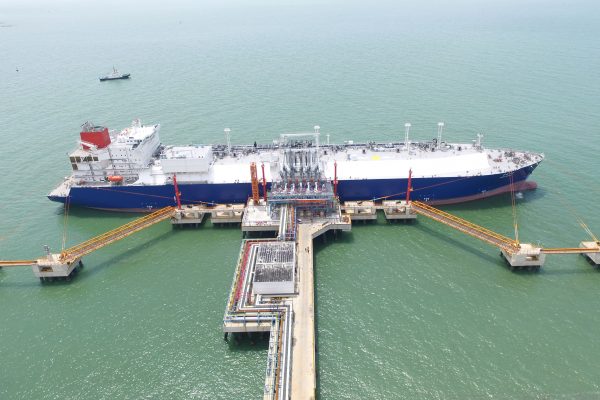The Australian government, like many others, faces increasing pressure to intervene in the gas market. As the world’s largest liquefied natural gas (LNG) exporter, Australia’s choices will have significant global impacts. Australia’s major LNG consumers — China, Japan and South Korea — are nervously awaiting a decision from the Australian government. They are the world’s top three LNG importers and imported 85 per cent of Australia’s LNG exports in 2021.
Australia’s LNG accounted for 29, 28.7 and 16 per cent of total LNG imports in China, Japan and South Korea in 2021 respectively. These countries are on the lookout for LNG export controls, which will diminish their supply sources and increase their spot prices.
Despite being one of the world’s largest coal and LNG exporters, Australia still faces an energy sector crisis. The Australian Energy Market Operator (AEMO), responsible for operating the gas and electricity market, made history when it suspended the national electricity market on 15 June 2022.
Australia’s east coast gas market is also in crisis. The Gas Supply Guarantee — the gas industry’s mechanism to ensure that gas supply can meet peak demand in the National Electricity Market — has been activated twice since June 2022.
The first activation in June capped the gas prices in the state of Victoria at AU$40 per gigajoule (US$27) to protect gas consumers from rising prices. AEMO then ordered Queensland state suppliers to provide gas to the state of New South Wales instead of overseas on 19 July 2022.
The gas price problem arose after Australia’s east coast started exporting LNG in 2015. This connected domestic markets with international gas markets. By making domestic consumers compete with consumers abroad, the Australian market became subject to international gas prices.
Connection to international markets has contributed to skyrocketing gas prices since 2020. The monthly Japan Korea Marker, a spot price benchmark for gas in East Asia, increased 14-fold in two years. British thermal units — a measure of the energy content in gas — increased from US$4.2 per million units in August 2020, to US$18.2 in August 2021 and US$56.3 in August 2022. The monthly Dutch Title Transfer Facility natural gas price increased 24 times in the same period.
East Australia’s domestic gas prices are following international prices, albeit less dramatically. The quarterly average price of the Victorian gas market increased from AU$4.65 to AU$28.83 per gigajoule from June 2020 to June 2022.
To protect gas supply security on the east coast, the Australian Competition and Consumer Commission (ACCC) recommended that the federal government activate the Australian Domestic Gas Security Mechanism (ADGSM).
The ADGSM is designed to ensure a sufficient supply of natural gas to meet the forecasted needs of Australian energy users. In the event of a looming supply shortfall in the domestic market, ADGSM empowers the federal government to enforce export controls on LNG. Since the ACCC forecasts that the Australian east coast could face a shortfall of 56 petajoules in 2023, the federal government may need to activate the ADGSM and consider export controls.
But given the arduous process of activating the ADGSM and the perceived ‘sovereign risk’ associated with cutting exports, the federal government and LNG exporters have a mutual interest in avoiding its activation. In an agreement with the Australian government in 2021, east coast LNG exporters committed to offering surplus gas to the domestic market before selling it to the LNG market in Asia.
As a net gas exporter, Australia’s crisis is more a price issue than a lack of supply. At the heart of Australia’s energy crisis is affordability. But neither the ADGSM nor the gas exporters’ agreement can be expected to reduce the exceptionally high prices being inflicted on Australian consumers. The LNG exporters’ agreement with the government upholds the principle that domestic prices remain competitive with prices offshore, so there will be no price suppression effect.
ADGSM cannot legally be activated based on high gas prices alone. If international LNG prices stay around the current level, domestic gas prices could reach the AU$40 price cap set in the Gas Supply Guarantee — even with export controls.
The government will need to find new tools to solve the affordability problem. One could be the installation of a gas reservation policy on the east coast similar to that in Western Australia. This would reserve 15 per cent of LNG production from each LNG export project for domestic consumption. But gas reservation policies could have a net negative economic impact on Australia and potentially discourage future investment.
Canberra could also introduce a LNG levy specifically on east coast exports. This would provide a favourable price differential so producers will be incentivised to supply domestic users first. The government could also redistribute some of the profits from gas producers to customers to protect vulnerable consumers without distorting the gas market.
The choices made by the Australian government will have far reaching implications, not only for the Australian public but also for global LNG markets — especially East Asian markets. It remains to be seen what choices will be made and what their outcomes will be.
Xunpeng Shi is Professor and Research Principal at the Australia–China Relations Institute at the University of Technology Sydney.

